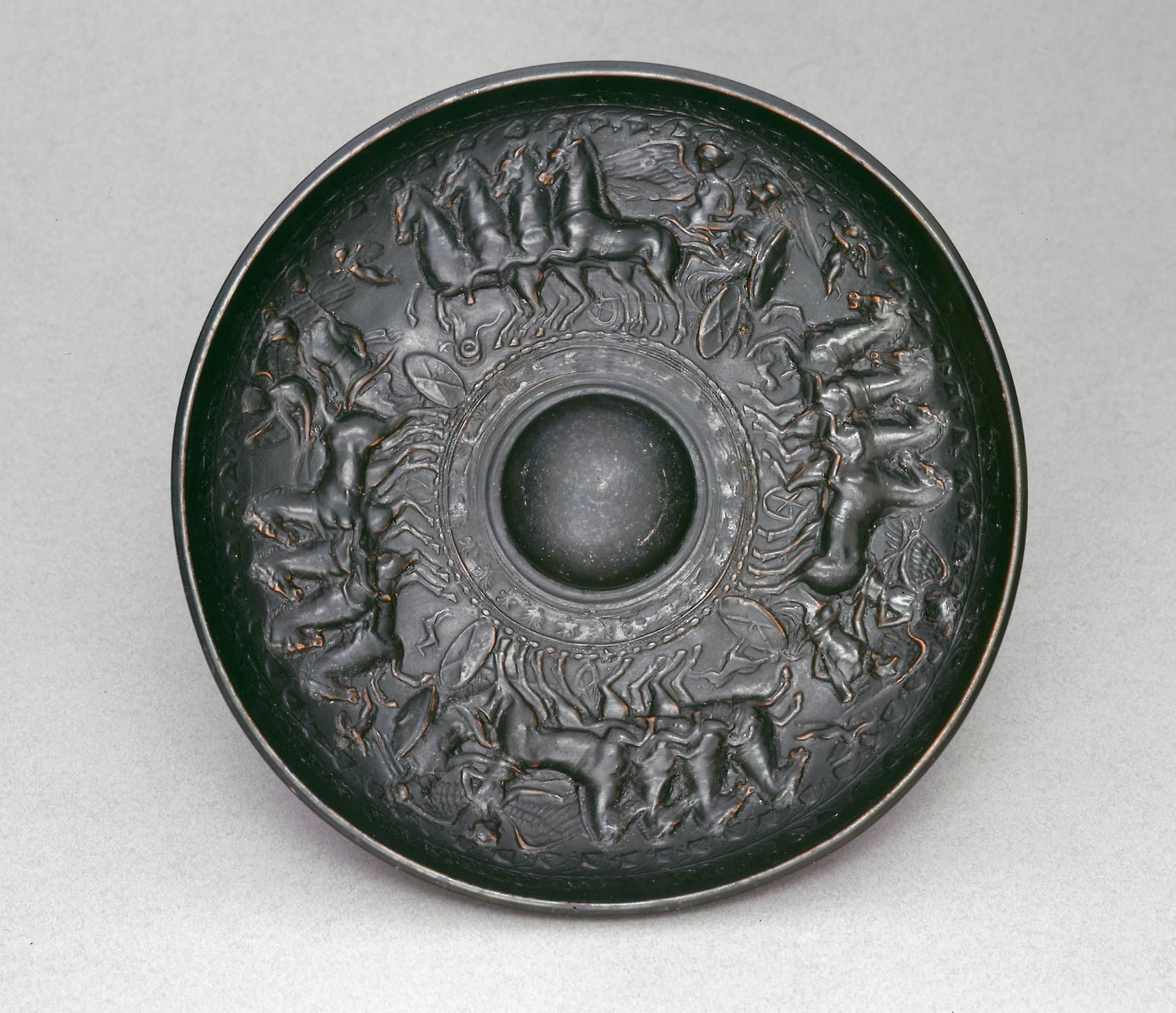
Phiale (Shallow Bowl for Pouring Ritual Libations)
During the course of the 5th and 4th centuries B.C., black vessels (commonly called black-glaze vessels) were made with increasing frequency in both Greece and South Italy. Many of them replicate the shape of metal vessels. Others have detailing that is molded (the phiale on the left) or incised (the stemless kylix at the back). Particularly noteworthy is the stemless kylix on the right that has been stamped in its center with nearly the same image, depicting the nymph Arethusa, as is the coin displayed alongside it. Although black-glazed wares can be rather coarse, these examples are quite fine. Regardless, they would have been less expensive than vessels decorated in other contemporary techniques, for example, in red-figure.
Credit: Gift of Martin A. Ryerson through The Antiquarian Society
300/250 BC
Terracotta, calenian relief ware
3.8 x 19.3 cm
1907.17
Image and text courtesy of Art Institute of Chicago, 2019
Where you'll find this

Art Institute of Chicago
Permanent collection



